LG G4 vs Apple iPhone 6: first look
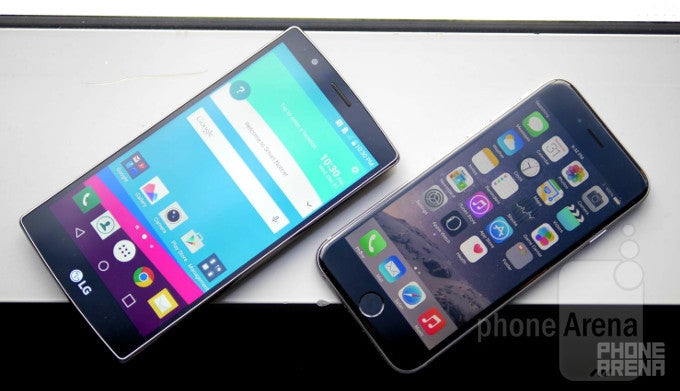
Design
The new LG G4 comes in two versions that differ in the materials used to make their back cover: the first one features a genuine leather back cover with a signature stitch that goes right along the center, while the second model comes with a regular, plastic back with a not-so-mundane diamond pattern. The Apple iPhone 6, on the other hand, is an all-metal creation.
The two also differ vastly in size: the 5.5-inch LG G4 is a large phone, while the iPhone 6 has a much more pocket-friendly size, and it’s also the one that’s noticeably thinner and lighter: thickness is 0.27” (6.9mm) on the iPhone and 0.25” to the whopping 0.39” (9.8mm) on the G4. In fact, the G4 is the thickest, chubbiest flagship of the year.
The color options on the LG G4 include: Ceramic white, metallic gray and gold for the plastic model, and red, brown, and black genuine leather. The iPhone 6, on the other hand, has a silver, gold, and dark grey color finishes.
Display
The LG G4 is equipped with a 5.5-inch Quad HD display, and it’s using an IPS LCD panel that LG claims has improved qualities over the G3 predecessor. The Apple iPhone 6, on the other hand, features a 4.7-inch screen with a resolution of 750 × 1334 pixels and also uses IPS LCD technology. LG has earlier said that the screen will have a 120% color gamut, a 50% higher contrast ratio (compared to the G3) and it's 30% brighter than most other displays.
We don’t have the full screen measurements of the LG G4, but initial impressions do seem to confirm that the phone performs well under direct sunlight with its high brightness, while we’d have to test more to give a conclusion on the color accuracy. The iPhone 6, on the other hand, is one of the flagship phones with best color accuracy, and it’s a beauty to behold.
Interface
LG has officially unveiled the new UX 4.0 before the announcement of the LG G4 and it retains the flat style of the G3 interface remains, but it has added a splash of color. LG promises some big changes, and the one we're most excited about is the improvement to speed: UX 4.0 is said to run smoother. The Apple iPhone 6, on the other hand, comes with the familiar iOS 8 platform that grants access to the rich App Store ecosystem, takes pride in its user-friendliness, and runs smoothly.
LG also brings new features like Quick Shot that allows you to double-tap on the rear home key to start the camera swiftly from any app and even when your display is off.
As a whole, UX 4.0 learns more from your routines, making the Smart Notice smarter, and the information is far more relevant. So, if you are a runner, the notification will offer the weather forecast as well as additional tid bits like, “Perfect time to go for a run.” Unique customizations continue from there where the UX 4.0 will also assign a unique ringtone ID for every caller that is in your favorites list.
Performance
In order to make full use of the 64-bit Snapdragon 808 that it features, the LG G4 runs on the latest Android 5.1 Lollipop with LG’s updated UX 4.0 custom skin on top. The iPhone 6, on its part, features Apple’s custom creation, the Apple A8 with second-gen Cyclone CPU cores.
In terms of GPU, the LG G4 with Snapdragon 808 uses the Adreno 418 chip, while Apple traditionally relies on an ImgTec GPU, in the iPhone 6 case, it’s the PowerVR GX6450 (more on its performance here).
Camera
The LG G4 sports a brand new 16-megapixel 1/2.6” sensor with a fast f/1.8 six-element aperture lens, laser auto-focus assist, optical image stabilization, and a dual-LED flash. The f/1.8 lens in particular is an exciting first in the mainstream smartphone world (some phones from China, though, have already featured such a lens). Such a wide-aperture lens comes with advantages for low-light shooting, as wider aperture allows for more light to hit the sensor, and in theory, this results in better noise management. The Apple iPhone 6, on the other hand, features an 8-megapixel main camera that comes with larger, 1.5-micron pixels, and the lens used on the iPhone 6 has f/2.2 aperture and a six-element construction.
What about the camera samples, though? We managed to snap the first sample images with the LG G4 to give you a rough idea about what pictures from the 16MP shooter actually look like. Notice that this phone comes with second-generation optical stabilization (OIS 2) for a boost in shooting in low light.
Battery life
The LG G4 boasts a 3000mAh battery, which is the same size as its predecessor, the LG G3 had. The Apple iPhone 6, in comparison, features a much more modest 1810mAh battery cell.
Having a larger battery might be the reason why the LG G4 is not among the thinnest phones out there, but users who prefer longer battery life will appreciate this. How do the LG G4 and iPhone 6 compare in battery life? It’s a bit too early to tell - we’re yet to run our detailed battery life tests, but those results should be coming in the near future, so stay tuned.
Expectations
In conclusion, it's clear that the LG G4 has added some improvements over its predecessor with the option for a more premium quality leather back, something that fashion-conscious users will appreciate, the new 16MP camera with OIS 2, as well as the boosted performance coming courtesy of the Snapdragon 808. Admittedly, though, it's a chubby device. On the other side of the fence stands the iPhone 6 that is just a very different phone: first, it's smaller, then, it's extremely slim and made out of metal, and it runs iOS rather than Android. Also, it does not offer the option to swap batteries or expand storage via microSD cards. Check your own priorities to make the best decision between these two, based on these key differences.

Follow us on Google News


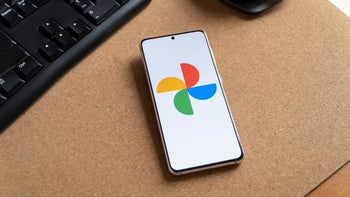
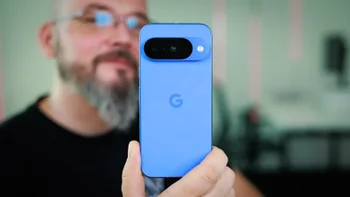
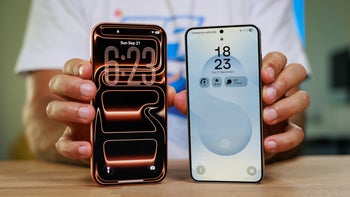
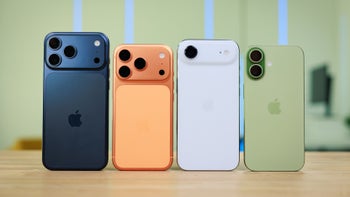
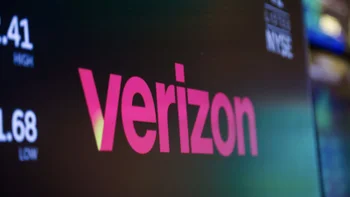
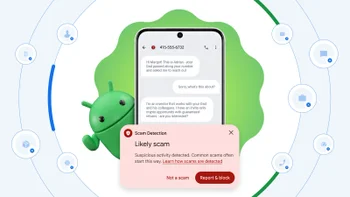
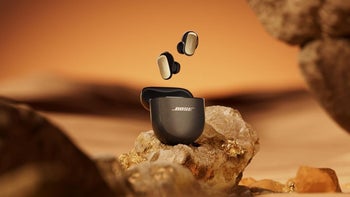
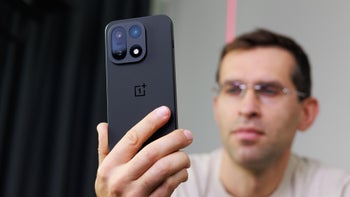
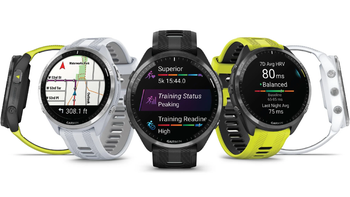
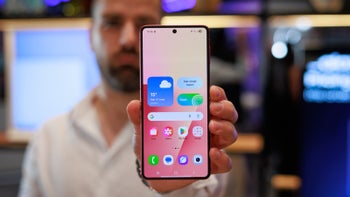

Things that are NOT allowed:
To help keep our community safe and free from spam, we apply temporary limits to newly created accounts: